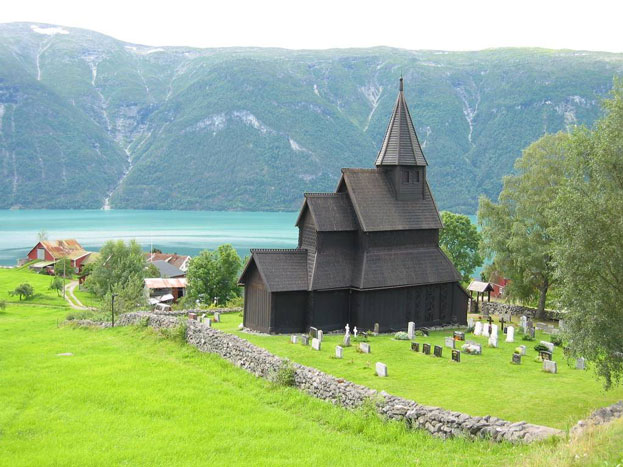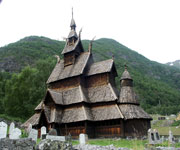The wooden church of Urnes (the stavkirke) stands in the natural setting of Sogn og Fjordane. It was built in the 12th and 13th centuries and is an outstanding example of traditional Scandinavian wooden architecture. It brings together traces of Celtic art, Viking traditions and Romanesque spatial structures. The stave churches constitute one of the most elaborate types of wood construction which are typical of northern Europe from the Neolithic period to the Middle Ages.
Continent: Europe
Country: Norway
Category: Cultural
Criterion: (I) (II)(III)
Date of Inscription: 1979
Introducing Christianity into Norway
Christianity was introduced into Norway during the reign of St Olav (1016-30). The churches were built on the classic basilical plan, but entirely of wood. The roof frames were lined with boards and the roof itself covered with shingles in accordance with construction techniques which were widespread in Scandinavian countries.
Among the roughly 1,300 medieval stave churches indexed, about 30 remain in Norway. Some of them are very large, such as Borgund, Hopperstad or Heddal churches, whereas others, such as Torpo or Underdal, are tiny. Urnes Church was selected to represent this outstanding series of wood buildings for a number of reasons, which make it an exceptional monument:
 |
| Urnes Stave Church |
Browse Gallery Plus UNESCO Storyline
Its antiquity: This church, which was rebuilt towards the mid-12th century, includes some elements originating from a stave church built about one century earlier whose location was revealed by the 1956-57 excavations.
The exemplary nature of its structure: This is characterized by the use of cylindrical columns with cubic capitals and semicircular arches, all of which use wood, the indigenous building material, to express the language of stone Romanesque architecture.
The outstanding quality of its sculpted monumental decor: On the outside, this includes strapwork panels and elements of Viking tradition taken from the preceding building (11th century). In the interior is an amazing series of 12th-century figurative capitals that constitute the origin of the Urnes Style production.
The wealth of liturgical objects of the medieval period: This includes Christ, the Virgin and St John as elements of a rood beam, a pulpit of sculpted wood, enamelled bronze candlesticks, the corona of light, etc.
Excellent conservation of a perfectly homogeneous ensemble: The embellishment of the 17th century (1601 and c. 1700) and the restorations of 1906-10 preserved its authenticity completely. The location of the church is within the backdrop of a glacial valley on the north bank of Sognefjord.
Browse All UNESCO World Heritage Sites in
Norway. The original UNESCO inscription
Here!!!




